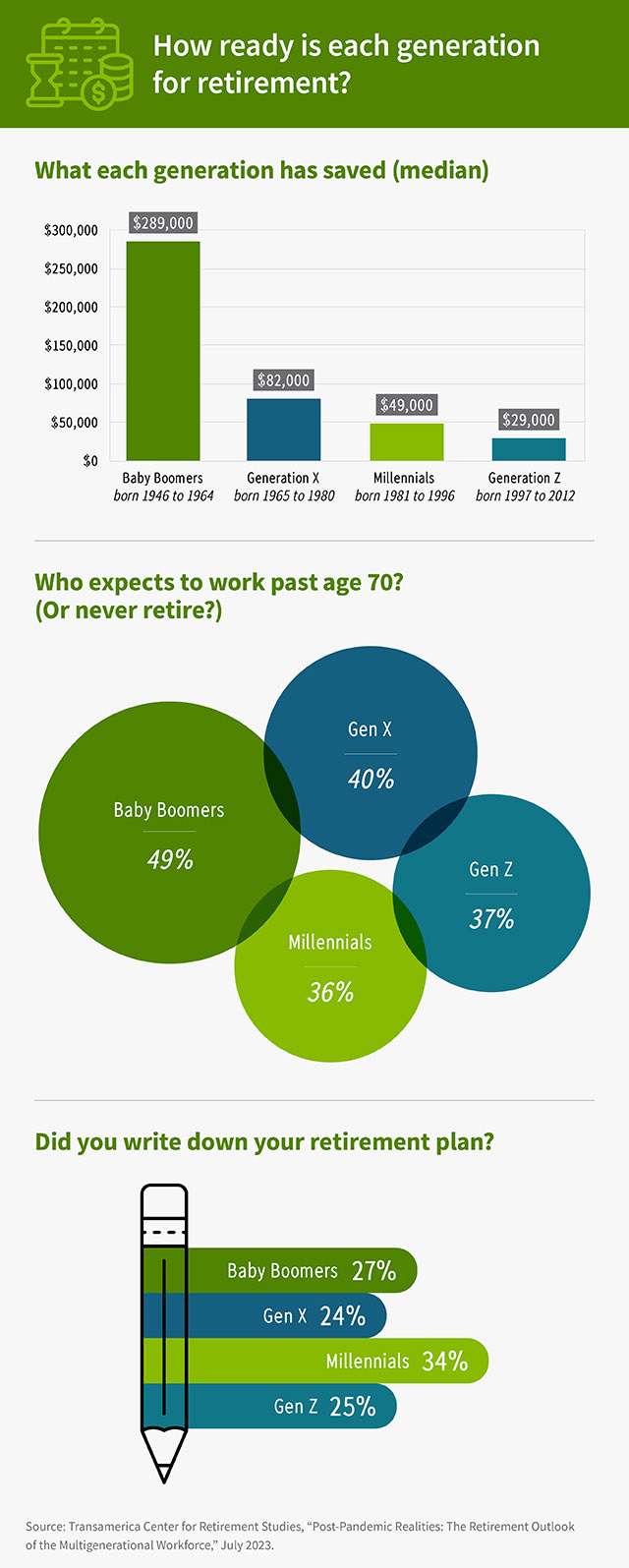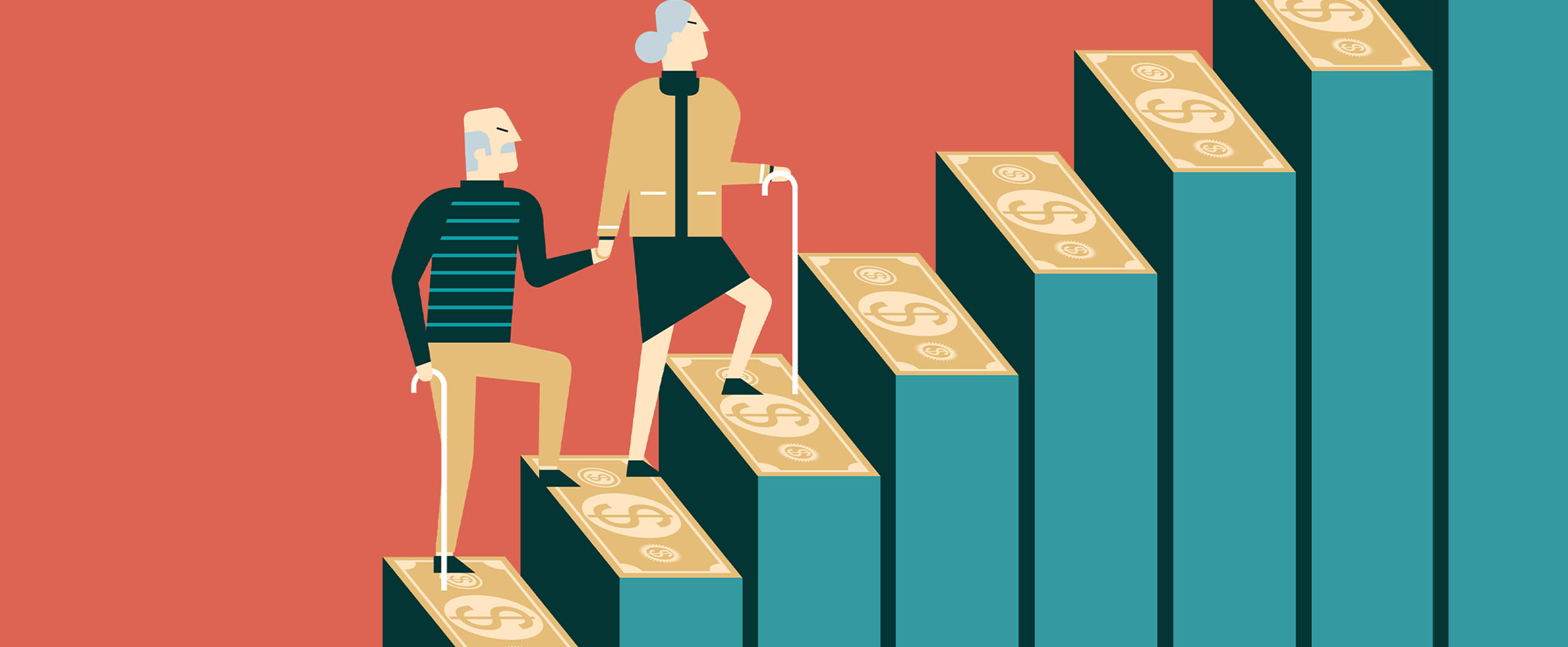While everyone’s number is different, these six factors will help you decide how much you might need.
For many of us, the goal of retirement is simple: We want to be able to do what we want with our time and leave the worries of the working world behind. But determining the best way to achieve that goal is a little more complex. How much money you’ll need to retire comfortably depends on your unique circumstances, but everyone can benefit from including these six factors in their retirement planning.
-
Housing and food
In retirement, some of your expenses may go down, but food costs may not be one of them.
Today’s retirees spend, on average, close to the same amount on food and housing as younger people, and even more so on a per-person basis, according to data from the Bureau of Labor Statistics. The housing data includes utilities, property taxes, maintenance and repairs, furniture, insurance and even cell phone service. The food data covers groceries and dining out.
- Households led by people 65 and over spent $20,362 on housing and $7,306 on food for 1.7 people. That works out to a combined per-person cost of $16,275.
- Households led by people between 25 and 34 spent $24,301 on housing and $8,914 on food for 2.6 people, for a total per-person cost of $12,775.
The bottom line: When planning for retirement, assume your housing and food expenses will be at least what they are during your working years and possibly higher.
-
Health care
Health care is perhaps the trickiest retirement expense to plan for. In future years, you may be healthy enough to run half-marathons for fun, face a chronic disease requiring costly treatment or find yourself with a health status somewhere in between.
You can likely count on health care costs rising faster than the overall rate of inflation because that’s what’s happened for most of the last 21 years. One rule of thumb is to assume a 5% increase in health care costs each year for the next 30 years, more than double the Federal Reserve’s target overall inflation rate of 2%.
Spending cautiously early in retirement can preserve more of your savings for health care costs, which are often higher later in retirement. That’s when you may need long-term care, which Medicare doesn’t cover.
The bottom line: Assume your health care costs will keep rising the longer you’re retired.
-
Your withdrawal rate
How long your retirement savings will last depends, in part, on how much you withdraw each year. One common strategy is the 4% rule, in which you withdraw 4% of your total retirement savings the first year you retire and each year after that withdraw the same amount adjusted for inflation.
When you’re planning for retirement, the simplest ways to increase your future withdrawal rate (without running out of money) are saving more and increasing your rate of return. Once you’re retired, you can reduce your withdrawal rate if you need to by cutting expenses or going back to work.
The bottom line: Stress-test your projected retirement savings and expenses. Will a 4% withdrawal rate give you enough money? If not, consider saving more or working longer.
-
Your retirement timeline
The earlier you start investing, the more you benefit from compound interest and the less you may need to save for retirement in total. The longer you wait to save, the more you’ll need to save to reach your goal, meaning you may need to work longer.
When you plan to retire is also important to figure out your asset allocation. As you approach retirement, you may opt for less risky investments such as bonds and other fixed-income instruments and fewer stocks. A financial advisor can help you determine whether your asset allocation is suitable for your risk tolerance and goals.
The bottom line: Factor your retirement timeline into your savings plan and consider delaying retirement to the latest date possible for you.

-
Social Security
Estimating your future Social Security benefit is simple—just check your statement at the Social Security Administration’s website—but figuring out when to claim your benefits is more complex.
While you can start receiving Social Security benefits at age 62, the longer you wait to claim your benefits until the age of 70, the higher your benefit will be. By waiting to collect, you’ll receive a larger Social Security check for the rest of your life.
Another thing to keep in mind: Today, Social Security doesn’t bring in enough revenue to cover its outlays, meaning benefits may be reduced in the future. The government might cover the shortfall in other ways, such as increasing taxes, cutting spending elsewhere or borrowing. It’s impossible to predict what will happen, though, so it’s important to prepare.
The bottom line: Consider waiting until 70 to collect Social Security if you can afford it. If you’re younger, consider saving more to offset potential benefit cuts in the future.
-
Your loved ones
At every stage of retirement, you may want or need to provide financial support to a loved one, such as aging parents or young adult children.
You may also need to help support your kids before you retire. Nearly half of adults between 18 and 34 get financial help from their parents. That can mean putting less money away for retirement.
The bottom line: Prioritize your retirement savings as much as possible and assume you’ll need to help at least one loved one before or during retirement. Also, consider whether you want to have enough to leave an inheritance for your children or donate money to charity.
When it comes to funding a secure retirement, there’s no magic number that will apply to everyone. But with a little forethought and a lot of planning, you can come up with a ballpark figure that works for you.
Start today
- Read more: 7 steps to start planning for retirement.
- Learn more: Take our Planning for Retirement course.
- Take action: Use our calculator to determine how much you should save for retirement.










